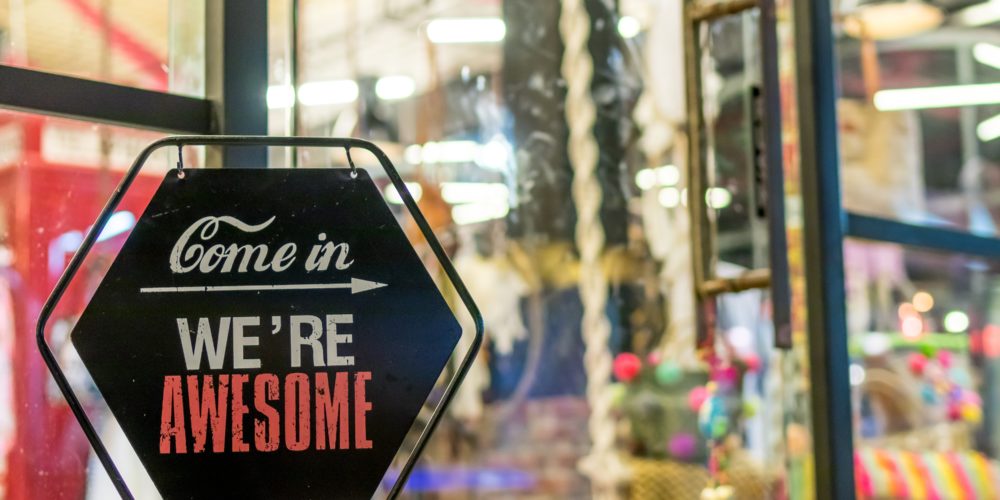Be part of the big move from transactions to experiences

I have written here that the word ADAPTATION has loomed large throughout this coronavirus pandemic: most humans have adapted themselves to new normals in their lives and businesses, sometimes with great ingenuity.
Today I want to focus on a similar word: ADOPTION. This word too is pivotal in understanding what will become of consumer and business behaviour in the pandemic and beyond.
Since this microbe started its global travels, I have done it, and so have you: adopted digital methods of leading our lives. We are all buying stuff online, even those of us who were previously convinced nothing beats in-person shopping. Those who once found mobile money a bridge too far have gone leaping across. Many of us are working remotely – even those CEOs who last year thought it was impossible to do something called ‘work’ from home. Most of our kids are sitting in houses, being taught online, by teachers who have had to learn some new and unfamiliar pedagogic tricks. Heck, even doctors are doing Zoom consultations and WhatsApp diagnoses.
All because it became necessary to do so.
Devices, bandwidth, clouds and platforms are now part of most people’s lives – even those of the old and the reluctant. A whole new bunch of global recruits have now ‘done digital’ – and found, well, well, that it actually works, and offers some serious advantages over the old ways of going everywhere to do everything in person.
Global ecommerce sales have rocketed; usage of digital bank channels has taken off; uptake of virtual-meeting software is off the charts.
But wait, this is just temporary, right? Once we are done with this virus we will all rush back to shops made of bricks rather than pixels, banks with counters rather than menus, classrooms with actual teachers rather than their screen versions, offices where we can hold coffee confabs with colleagues, right?
No. For two reasons.
First, the in-person experience is unlikely to be safe or pleasant for quite a while. Masking, enforced distancing, staggered gathering, relentless cleaning – all of these things will become part of the daily grind of doing things in person for the foreseeable future.
Second, surveys already show that most first-time users of digital services intend to carry on using them. Why? Because they are finally awake to the benefits. The reason the world was adopting digital in any case was because it was quicker, easier and mostly cheaper than the old analogue ways. The pandemic and its lockdowns just triggered the great acceleration of digital adoption.
And yet. Does this mean analogue is dead, long live digital? Does it mean in-person is passé, all hail virtual? Not at all.
I have said it many times: the future is both analogue and digital. None of us wants to degenerate into screens and pixels; we are made of flesh and blood, and want to meet, mix and mingle. So this digital acceleration does not signal the end of retail shops or bank branches or campuses; it does, however, signal a great shift, one that alert businessfolk must embrace with speed.
The shift is this: if you are going to run any sort of in-person business, you need to think experiences, not transactions. Anyone who has made an online purchase, held a virtual meeting or tapped twice to transfer money is now sold on the convenience. They will continue doing those things for routine matters. If, however, you want them to come in person to your shop or bank branch, it had better be because the experience will be measurably better.
If all they get when they come is danger, inconvenience and delays, they will simply revert to the digital alternative. If your shop just stacks goods to sell via queues at counters; if your bank just moves paper around to do things best done with clicks and taps – then your days are truly limited.
However: if you can reimagine the in-person experience you have everything to play for. For retail stores and for bank branches, that means rethinking layouts and displays and customer journeys; but more importantly, providing a genuinely human interaction. Smiles, welcomes, expert advice, patient assistance – those become the winning features of in-person selling. Not worn-out carpets and surly staff members; not queues and stockouts; not ignorance and indifference.
So: if you want the in-person part of your business to thrive, you had better ramp up the experiences you offer. Humans will want to come to you – but only if you make it both enjoyable and worth their while, and provide something far more interesting and rewarding than doing the same thing with a few swipes on their phones.
(Sunday Nation, 28 June 2020)

Buy Sunny Bindra's new book
The X in CX
here »
Popular Posts
- NY’s wake-up call to the old guardNovember 9, 2025
- Save your strength for repairsNovember 2, 2025
- How to listen, really listenNovember 16, 2025
- Empathy is the missing code in CXOctober 26, 2025
- Is AI hiring your company into oblivion?November 23, 2025















